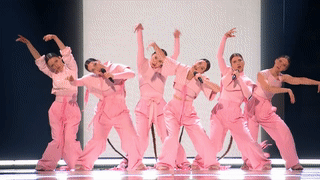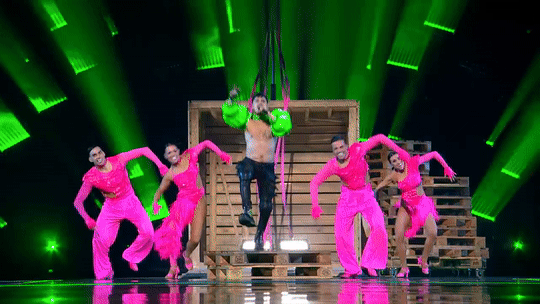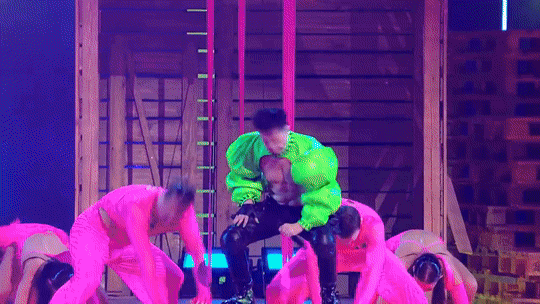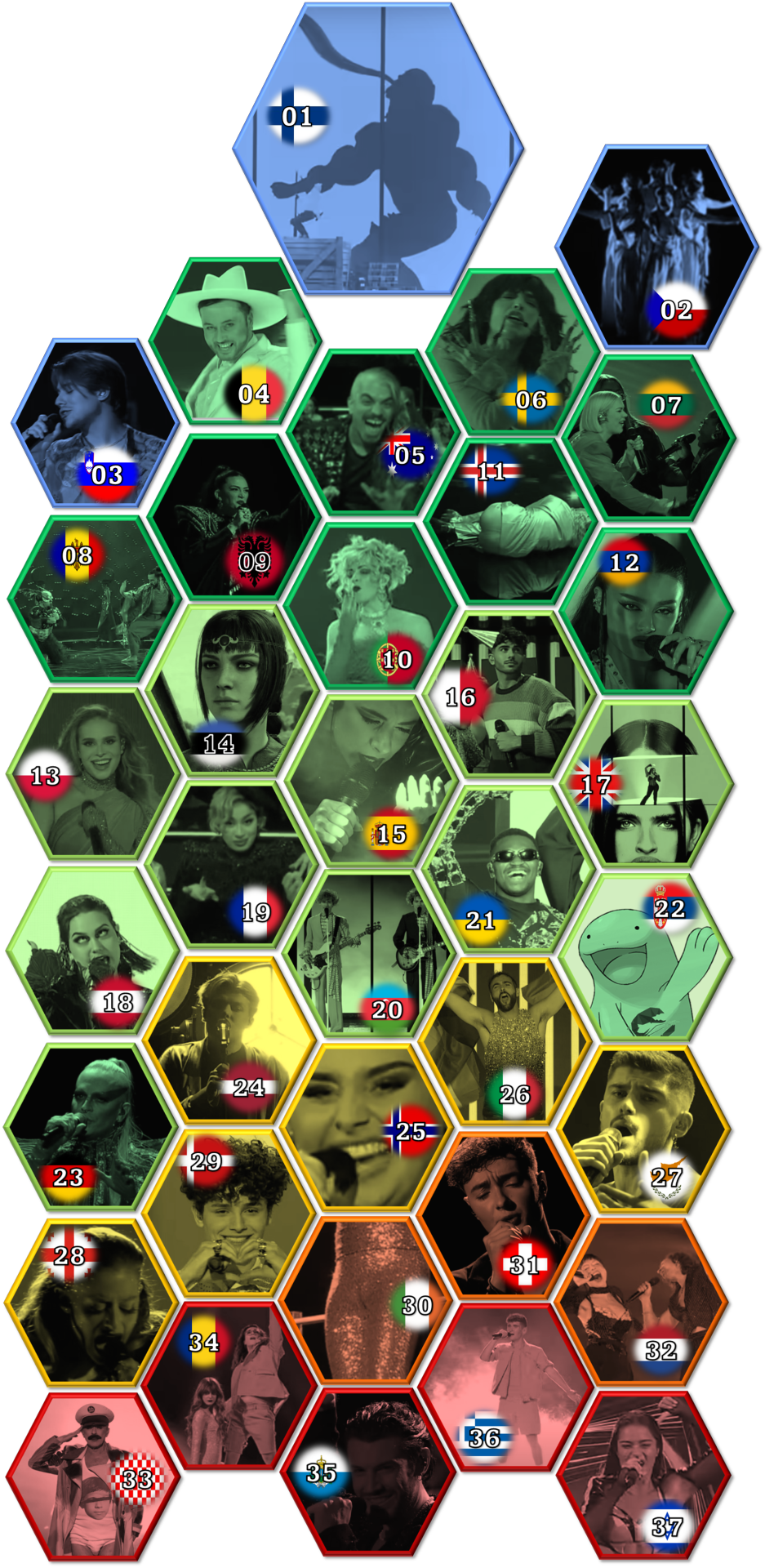#<- for Coding Languages Vs Standard Languages
Explore tagged Tumblr posts
Text
rambling to self bc i have a pen but no paper
anyway so the thing where you say “ok now set x equal to twelve” and the kid starts typing the Words “set x…” and you have to correct them to type “x = 12”, whether that’s an artifact of language in general or just a missed translation of the literal phrase
like it might be to do with age, kids start to extrapolate what you mean better and understand alternate phrasings (set x equal to, update x’s value, change x to be, et al). versus when they’re younger, maybe they take it more literally?
or it might not be related to age at all, or at least not completely
- could be due to neurodivergence, if the kid takes everything literally bc of how their brain is wired
- could be that they’re thinking of coding languages as equivalent to spoken languages, sort of how a new learner from english to spanish translates things directly, eg confusion over las vacaciones just being vacation in general
- could be based on home situations, maybe their parents are the type to mean things very literally when they say it, so it’s what the kid is used to? (which would then extend to where the parent gets that from, depending how many layers back it goes)
anyway just generally whether the acquisition of languages is comparable with coding vs spoken languages, not to mention sign language? obviously if a kid starts learning coding younger then it’ll be easier if/when they do it in college, but is it the same advantage a kid would have learning a ‘standard’ second language young? i want to say i’ve seen it be that learning a new language is easier the younger you are, but would that apply to coding languages? even outside the matter of syntax and stuff, since of course you wouldn’t have the typing verbatim words “set x equal” problem when working in scratch. scratch might be comparable to kids using building letter blocks, grabbing each letter and placing it where it goes to form a word? it’s more complicated, since they’re also learning about logic (loops, if statements, broadcasting, movement), but it feels tangential to the unus annus spelling game video
then you might also have to worry about the fact that, similar to how there’s multiple Standard Languages, there’s multiple coding languages, where each of those has their own basic building blocks (usually)
standard languages typically have verbs, nouns, pronouns, infinitives, tenses, et al
coding languages typically have functions, variables, operations, im sure there’s more i’m forgetting, et al
and obviously there’s edge cases, like how that one languages doesn’t have any numbers, and how there’s no native string functionality in C (i think, it’s been a minute since i took that class)
but the same way a kid learning spanish is not the same as a kid learning german, a kid learning python is not the same as a kid learning java. obviously python and java use the same Standard Language, but their syntax and such is different. versus the standard languages, at least with spanish/german you’re still going to be working with the same set of alphabetical characters (plus ñ, ß, accents, …), but it’s the construction and order that differs
eg in standard languages, you might have to worry about if the adjective goes before or after the noun, which extends to the lovely little old green dragon issue in english. in coding languages, python lets you just say “x = 17” and then two lines later say “x = ‘bootypants’”, and it’s fine. in C++, you have to declare x as an int first, and then it’s an int forever
new tangent but it’s a lot harder to just casually learn coding in your down time. you typically need either a huge textbook or an interactive tech device, and usually it’s learned through practice (either specific instructions or general guiding along making whatever you want), at least in my experience. with standard languages, you can really just do that however you want - find books for basically any grade/age, listen to podcasts, watch shows and movies, …
the closest equivalent to that is watching/hearing people talk ABOUT coding, but that’s usually more about quirks and pros and cons of a given language or syntax, and less about actually learning the language itself.
then also the matter of how there’s usually at least three components to standard languages - listening, speaking, and reading. then additional necessities, eg expression and gestures (obviously more significant in sign language) and indirect phrases (sarcasm, metaphors) that are more nuanced
that’s all i’ve got for now i think, tbd if i rb this post or just make a new one every time i have a thought but im gonna give it an organizational tag just in case ✌️🫶
#labhrambles#my first hour kid didnt show up so ive just been thinkin my thoughts for a while#clvsl#<- for Coding Languages Vs Standard Languages#but shorter for those of us (me) who are too lazy for allat
0 notes
Note
i mightve asked this before, in which case go ahead and ignore this lmao. which characters would be the best vs worst when handling an autistic darling?
Oooh, this is a cool question! I would say it depends on the particular symptoms the person has, so I'll go over some symptoms and which yanderes would respond best vs. worst.
avoidance of eye-contact
Obviously, shy, autistic, or autistic-coded yanderes would work really well with this (and other) symptom(s). Your Donatello's, your Newt's, arguably your Peter Parker's. Also, yanderes who are able to sense when their darling's attention is on them supernaturally or just out of sheer social aplomb. Elves, for example, would be great with someone who doesn't like eye contact, because their body language conventions differ as a result of being able to communicate mentally.
Roxanne Wolf would be distinctly bad for this, based on her need for attention as demonstrated in Help Wanted 2. But she's also not beyond reason when it matters, as we've seen in Ruin DLC, so I'm sure communicating about it is on the table.
sensory reactivity
Okay, I think Dr. Strange would very specifically be bad for this, because his movies are all swirling kaleidoscopes of magic that would definitely be sensory overload in real life, and I have mentioned before that I don't see him as a considerate yandere. If anything, he might enjoy inducing sensory overload for the express purposes of making his darling require comfort, care, and isolation from others.
On the other hand, and maybe a weird pull for this, but Zafrina from Twilight would be great. Alec, too. Both have powers that would be super helpful when darling is overwhelmed.
Druig is able to just make everyone nearby shut up, which he would employ liberally.
food sensitivity/pickiness
Yanderes who enjoy cooking could go both ways on this. I could see some being offended by negative feedback and some taking it as being gifted with the challenge of meeting their darling's standards. Teruteru from Danganronpa and Esme from Twilight would both probably be good about receiving feedback and making changes. Super eager to please. Esme more so than Teruteru; he might get offended at first.
Rich and royal yanderes would delight in someone picky. They would love to be able to send food back with new, highly specific orders because darling doesn't like grapes with soft spots. Your Tony Stark's, your Byakuya Togami's, your Toph Beifong's, your Coriolanus Snow's.
Ralph from DBH would be a problem. He has a very weak grasp on what humans eat and a very high sensitivity to negative feedback. (Wait, he's just like me...)
resistance to changes in routine
This one would be a problem for yanderes who feel a need to go on adventures and trips with their darling. Which isn't necessarily the same as adventurous yanderes. Some adventurous yanderes might enjoy the idea of their darling staying behind at home keeping to a comfortable routine. But the ones who want their darling along on the adventure would be problematic. The Doctor, for example. Especially Eleven; he gets bored easily.
Whereas I think a lot of superheroes would like the idea of keeping their darling sequestered away, living predictably and comfortably. Clark Kent, Steve Rogers, Druig...The only catch is that some of them (Druig) would probably be a bit condescending about it.
I think Daycare Attendant would be great for routine. Coloring time, snack time, naptime, same time every day, sign them up! Also condescending, but they genuinely can't help it because it's how they're programmed.
Technically, Phineas and Ferb keep to a very specific routine, albeit a pretty tiring/potentially overwhelming one.
sorting things
This would be great for the disorganized genius character type. A Bruce Banner, if you will. An organized genius probably already has a system and might have trouble with someone sorting things differently than they have them. A distinctly slovenly character probably wouldn't mind either way.
hyperfixation
Yo, Queen from Deltarune would be the best for this. She would create an inescapable palace of the thing darling likes. Swatch and the Swatchlings would be involved.
stimming
There might be a problem if the yandere is easily distracted and needs to focus on something else. The main one I can think of who fits that description is Percy Jackson. That's not a distaste thing; just a pragmatic issue. Yanderes who experience sensory overload might also have an issue with it. My first thought was Queen Elsa.
On the other hand, Leo Valdez would love to make little stim toys for his darling. Donatello, too.
#male yandere#female yandere#yandere#yandere marvel#yandere mcu#yandere tmnt#yandere rottmnt#yandere deltarune#yandere disney#yandere pjo#yandere hoo#yandere heroes of olympus#yandere fnaf#yandere twilight#yandere dbh#yandere hunger games#yandere thg#yandere dc comics#yandere atla#yandere utdr
283 notes
·
View notes
Note
i'm debating giving one of my OCs strabismus exotropia. the work/story is YA SFF. part of my reasoning is he's one of two characters in the group who's the Brains, his specialty being history and languages, and his magic relates to mind reading and telekinesis, and i know too often characters with eye differences are portrayed as the opposite of smart. one of his big hobbies is reading and i know strabismus can affect it bc of focus/headaches, so i thought maybe reading/being fluent in braille could help him engage in his hobby when actual reading is getting on his nerves / refer to his amblyopic eye as his "permanent side eye" as he can be quite critical of others sometimes. his personality is being smug but normally right and very sure of himself (though not without his insecurities), he's seen as a bit of a Pretty Boy (handsome), and is the youngest of his group of friends so they do look out for and protect him a bit more. is there anything else i should look out for, or any way i may be playing into tropes i'm unaware of? he's also queer (gay) and brown (pakistani coded) if that helps any provide context, and has an antagonistic bickering but genuine friendship with another boy (the other brains) that eventually develops into a romance
Hello!
In general, this sounds like a perfectly fine character concept and there's nothing about his personality/portrayal that's immediately jumping out at me. He sounds like a well rounded character, which is something I'm very glad to see!
One thing I would like to mention is that, while braille may be a useful tool for him at times, it's not likely to be a feasible solution for his day-to-day life.
Braille books aren't like regular printed books, there are quite a few differences that make them much more difficult to use:
Size:
Braille books aren't easy to carry around. With the possible exception of some smaller children's books, most are pretty thick and VERY heavy. In fact, many braille books are split up into several separate volumes for this reason.
To put the difference into perspective, let's look at The Fellowship of the Ring (The first Lord of the Rings book).
A standard printed copy generally weighs around 1.5 lbs, give or take a bit if it's a hardcover. A braille copy of the same book weighs over 15 lbs.
This printed copy has 432 pages including pages for spacing, author's notes, etc. The braille copy has 873, not including any non-text pages.
The physical dimensions of braille vs printed books also differs greatly. While a printed copy of The Fellowship of the Ring may easily fit in a small bag or even a pocket, the braille copy is around the size of a standard three ring binder (In terms of length and width at least).
This is all to say that taking a braille book with him out on the go wouldn't exactly be a simple task and, because of how braille is read, reading on the bus or on a park bench or anywhere that isn't a flat surface without disruption wouldn't be a possibility.
Cost:
Aside from the problems with physically reading and using braille books, it's also very difficult to acquire them in the first place. Braille books are EXPENSIVE.
Depending on the availability of the book, the size, and the popularity, a single braille novel can go for anywhere from 50$ to well over 300$ (In Canadian dollars).
The hardcover printed copy of The Fellowship of the Ring mentioned before costs around 25$ (Again, in Canadian dollars). The braille version ranges from around 150$ to 225$ depending on the type of braille.
And if your character wants to request a less popular book, it can still be pretty expensive. There's a wide range of factors that can affect the cost and it varies so wildly that it's hard to get a reliable estimate but they could be looking at anywhere between 5$ - 50$ per page.
Although some libraries may have braille books and there are several virtual libraries for the blind with braille books, it can still get very pricey for them to build up their own collection.
Availability:
In part because of this cost, there is a very low availability of braille titles compared to printed titles.
If your character is into more popular books like Harry Potter, Lord of the Rings, or some of the classics, they'll have little issues finding a copy.
Beyond that, unfortunately, they'd be out of luck. If a book isn't incredibly well known, it's a very slim chance of there being a braille version. Likewise, there's also very low chances of finding more recent releases.
Even one of my old favourites, The Perks of Being a Wallflower -- which was written around ten years ago and is fairly popular, doesn't have any braille copies.
While it is possible to get a book printed in braille for yourself, the costs of it can get quite high (As shown above) and it's not generally an option that people go for.
Durability:
The last point I want to make is that braille books don't last as long as printed books. Although braille is read with a light touch, the braille does get worn down over time.
Library books in particular are an unfortunate victim to this. Because so many different people are borrowing the books, they often get worn down much quicker. This can be because of new braille readers using a harsher touch when reading or it could be because of improper storage, either from the readers or from the library itself. It's less likely that somebody will notice when the braille is worn down.
The braille itself isn't the only concern. A lot of braille books are bound differently than printed books are and often use plastic for the bindings, which requires more care than the usual bindings of printed books. I've included an example of what a braille book may look like below.

[Image Description: A braille copy of The Fellowship of the Ring. It is open to a tactile map of Middle Earth. The binding is made of small, circular pieces of plastic, similar to a notebook of sorts. End ID.]
Now, this all isn't to say that he can't use braille books -- these are just some things to consider. And if you do choose to go in a different direction, may I suggest audio books?
Audio books have a wider availability than braille books do and are much less costly. There's also the added benefit of being able to take them pretty much everywhere with you, as long as you have one or two downloaded to your phone.
You could also go with having a balance of the two. Maybe your character uses audio books with his headphones or earbuds during the day and reads his braille books at home so he can give his ears a break from his headphones/earbuds.
Another option is large print books or e-books that allow you to adjust the font size, which could make it easier for your character to read them. There are also other strategies that he could use when reading regular printed books, such as covering an eye or using a bookmark to sort of box in the lines as he reads.
As one quick final note: Reading braille is actual reading! Braille is just another language with a different -- not lesser! -- method of reading it.
Hopefully some of this information helps! If you're interested in knowing more about the specifics of braille books, Blind In Mind's Braille Bookstore has a lot of great resources and their copy of The Fellowship of the Ring is the one I've been referencing.
Cheers,
~ Mod Icarus
64 notes
·
View notes
Note
ik u already answered an ask abt absolute flash but when u read i am so curious as to ur thoughts abt what they did with barry....
personally, im in a mixed mind over it but i think im tilting towards heavily intrigued with the direction they are going
how dare you guys make me read more than i ever intend. first knight terrors, then last year’s flash run, now this. it’s like you’re trying to make me reach some annual quota 😒…
well it’s working, so i might as well do a full first impression (spoilers under cut)


nd/disability-coding + control issues, a speedster classic that i can’t get enough of 😚👌 also, iris is dead in this? :(

aww he wants to impress him. already loving the direction and body language of this art style

damn they rly just killed off every woman in this story before it even began huh. gotta find smth to bond over now that their connection thru iris is off the table

i love that he says this like it’s smth we can just skip past. is this going to be a whole commentary on superpowers = weapons? a contrast to how wally never wanted powers vs barry actively trying to achieve them?


reeeally enjoying the family mess in this so far. typical barry, sticking his nose where it doesn’t belong. also interesting to see how quickly wally latched onto him, but ig your standard of boring has a higher margin when you’re living like this



barry going from being wally’s one guiding support to the incidental but inseparable cause of his anguish 🙂↕️ i don’t believe he’s Dead, but i’m hoping he haunts wally still
from this first issue, i’m not rly bothered w barry’s role in the story. i love his relationship w wally already, and it’s too early to have any strong feelings abt his involvement in the military. weird in general, but as an elseworld, it’s an interesting way to have barry directly in wally’s life. idm barry being a little fucked up, as a treat
characterization-wise, we’re getting a well-meaning but careless/impulsive vibe from barry in the way he’d rather ask for forgiveness than permission when he sneaks wally into classified information and how he seems motivated by potential over risk. he exudes “casual but nervous,” which is how i like him lol. not a lot i can say abt wally since i don’t have much reference, but i rly rly love his internal voice and how animated his movements are. i kinda want him to have intrusive thoughts. he’s already got the obsessive overthinking down, what if it was worse
#what i rly need is a dc comics bookclub but it never ends up happening#so this was a great motivational push. i will continue to only read when directly confronted#dc#danswers#danbles#absolute flash#wally west#barry allen#rudy west#the flash#panels
24 notes
·
View notes
Text
“Bad Representation” is actually a topic I’m really passionate about and interested in, I could talk about it for ages. The way people handle “Bad Representation” as a concept is genuinely fascinating, too, so this is both an analytical fascination and an anthropological one.
For clarity, I thoroughly do believe there is such thing as “Bad Representation”, especially when it comes to expressions of pure bigotry from the person doing the representing… But I personally think everyone’s bar for what counts as “Bad Representation” is set a little bit too strictly, has no real account for capitalistic and/or historical restrictions - For Example: Language and common understanding of queer identity being far different in the 1950’s than it is now, and Studio Meddling - and also, interestingly, tends to take no account for the opinion of those getting “represented”, or the idea of individual satisfaction.
There’s been many, many times where a character is objectively pretty bad representation by modern standards, but discussion surrounding it takes no account for the concept of Resonance. Sometimes a character is not “Good Representation” as an objective concept, but they are relatable, likable, and quite fun to watch. I’ve seen quite a few instances of people talking down to the mentally ill or disabled for enjoying a Slasher in part because of their disorder/disability, or queer people for enjoying Hays Code villains. Sometimes a character isn’t written kindly, or isn’t written well, but they really resonate with you… And that counts for something.
One of my favorite characters - one who has helped me come to terms with my cPTSD and OSDD - is a representation of PTSD + DID that is objectively not very good. He’s basically a Vietnam War veteran, who gets an Alter in the middle of the war that is basically a self defensive Murder Mode. It’s literally the PTSD from The War and Evil Alter cliche, but there’s just some aspects that really hit for me, like the fact that he’s considered the nicest, kindest person in the cast, and the alter is portrayed clearly as being in constant self defense mode, thinking he’s still in the middle of the war, and also being quite silly. There’s several details I view as being done pretty well, a whole arc about him grappling with his mental health in a way I find quite fascinating and visceral, and I enjoy him quite a lot! But many would agree that he’s “Bad Representation” because of the War PTSD and Evil Alter tropes. Even I agree that those things kinda suck, but that’s not stopping the fact that this character has meant a lot to me, and that I really would not be the same level of okay with myself if I hadn’t discovered this character.
I’ve caught flack for this. I’ve seen many other people latch onto a character who is not executed very well because they find them personally relatable, or are using them to figure some things out about themselves, and also catch flack for it because the character is not “Good Representation” for a group as a whole. No account for Resonance, no account for Individual Experience. It’s a fascinating lack of a sense of nuance.
I think people have forgotten - or perhaps do not realize - that criticizing a base concept, or base execution of a concept, is different from criticizing individual experience. It’s like the difference between criticizing the makeup industry vs. criticizing someone’s personal choice to wear makeup. It is good to point out when something is written or executed poorly, but you do not know the reason why that one individual disabled person enjoys a poorly written character who shares their disability. I would even say that they probably know more than you do that it’s written badly, because they have lived that character’s disability and you likely have not. I think you should maybe step off if a blind person really likes Terezi or something. You do not need to patronize them by telling them that she isn’t “Good Representation” because her quirk isn’t screenreader friendly, and that her blindness has a magical workaround. I think they already know that these are facts about her that are true. They like her for a reason, and that reason is Resonance.
#homestuck#media analysis#disability#representation#bad representation#good representation#nekro.pdf#nekro.txt
104 notes
·
View notes
Note
Popping in to say that I’ve been following ur htp au since like,,, October last year? I’ve left some asks before about how much I love it (I was that anon who was needing out about tango and bravo’s names and the international flag code from several months ago + a few other asks)
The ending was the most beautiful and SATISFYING piece of literature I’ve ever written. Genuinely. Wtf. And I’ve read a lot of books. I’m an English/creative writing major and your work is so beautiful, the story arcs, every loose end was tied up, you’re like the new standard for awesomeness. Seriously.
every loose end was wrapped up so well, all the closure and follow up we wanted, explanations of things like Scáil, hels meanings, their admin, even other hermits at the end there that were mentioned about in asks before but I never thought would be relevant in the main story. Things we didn’t even need to know like bX I was not expecting at all, I was content with just what we knew about him but you made it even better.
also the callbacks to earlier chapters, earlier moments and little jokes, bravo and Timmy’s not a builder moment was awesome, the way you portrayed bravo and tangos mindsets was phenomenal and with such intricacies. Stunning. And you didn’t force a reconciliation between bravo and timmy either, so natural.
Everything had a reason, an explanation, even the intricacies of herobrine? wasnt expecting that at all. Or Alex???! You didn’t need to include that detail BUT YOU DID AND I LOVE IT
the way you explained the greater player universe learning about hels, also the pausing on the red stone tutorial!! Loved that part. The pov switches and pacing of the last chapter p 1 and 2 were perfect. Well executed to keep the reader able to understand but still enough suspense. Not to mention once again your way of capturing each persons way of talking. Bravo having similar vocab to tango especially really drives home their similarities.
The way atlas breaks. It’s so hard to make an ending with someone like him SATISFYING because man I’ve read so many stories where it’s just not it. But you did it so fucking well. And subjected to retail salesman lifestyle on top of that? Wonderful. His damn glasses finally broken. Good. Or The watchers and listeners in the background too! Loved that. You explained things that were talked about in asks so well that even those who don’t read the asks could understand.
Most of all emotional and moral nuance. So perfectly explained. As someone who used to have a hard time with moral ocd I relate a lot to the obsession with good vs evil that I’ve had to come to terms with in my own journey and I can really see that mirrored in this fic, just like the characters learn.
And in addition to it all, I loved the ending with the Minecraft credits end message. You not only made it interesting and beautiful story and awareness of the player’s existence without being too confusing, but perfectly replicated the voices of the end credits characters. The tone and language that the original has. Last week I beat the enderdragon for the first time. I used to only play on public servers or private worlds with friends, even in single player I was a big coward and hated fighting mobs even with keep inventory and no mob griefing, they just stress me out!! But I did it for the first time and I read through the entire end credits of a game I’ve loved for so long for the first time and it made me cry. And you replicated it perfectly which is SO hard to do. The benevolence of the universe, no plot holes to be found about the logic of hels, the voices of the two people and their storytelling and acknowledging of the story. The universe is described so similarly in cannon about the good and bad that it’s like the au fits perfectly. The “why them?” Beautiful. It was like deja vu scrolling through like the end credits with the same benevolent warmth that envelops you like a wordless, comforting presence from this fictional universe. A touching moral about games and stories and people. And just like the end credits of both the game and this fic said, there will be another game and another story. The universe still loves the player just as it did before. This was such a special story to read and I am so glad I did. Genuinely, this will stay with me for a long time, we can learn a lot not just about writing and storytelling techniques, but about ourselves and eachother too.
Thank you.

AUUGHHHH…. genuinely one of the loveliest reviews i’ve ever gotten… your reaction to the finale is everything i could’ve hoped to achieve. thank you thank you THANK YOU <333
#hels to pay au#HTP ask#lost track of how many times i’ve reread this since it showed up in my inbox#it really means a lot
23 notes
·
View notes
Text
Eurovision 2023: #02 & #01 (Finale)

02. CZECHIA Vesna - "My sister's crown" 10th place
youtube
Decade ranking: 5/116 [Above Daði Freyr, below Käärijä]
Finland over Czechia seems like a no-brainer. Some midcarding bitches vs ~K*Ä*Ä*R*I*J*Ä~ come on, how hard can it be? Who is Czechia even for?!

ME, motherfucker. This entry is for ME, and FOR ME ALONE!!! and since this is MY ranking, that made the decision very difficult. It took me MONTHS to settle who to put at the top.
Vesna are often cited as one of the more overrated acts in the year. Overrated by whom? Who overrates Vesna? Isn't 10th a correct placement? i've met NO ONE who would even consider putting them as high as second? - and I obv don't count since it took me AN ETERITY to out myself as a Vesna stan!!
I'd counter that Czechia are THE MOST UNDERRATED by the fandom (not by placement - that is Slovenia, as always) and absolutely deserved all the good things that happened to them ^_^

So obviously, there are multiple factors at work here. The song is a fantastic earworm. Like, defo one of the best in the year? In terms of sheer replayability, "My Sister's Crown" is on the same level as "Edgar" (studio only :-/) and "Carpe Diem", and you know how much I value those. The song has four languages (including Bulgarian) and none of them clash. The lyrics are quotable and fun. This is a track with ATTITUDE and ZEST, that managed to criticize the war in Ukraine without beating us over the head with it via a poorly hidden, clumsily written political message. The song is SMART, and respects its listeners.

LOVE'S NOT A MONEY BAG BLOOD'S ON YOUR GOD'S HANDS YOU CANNOT STEAL OUR SOULS
However, going into the year, there were issues - Vesna were messy and dissonant, and the six girls often gave the impression of competing against each other for attention. They were not a UNIT. Although "My Sister's Crown" was always one of the best songs, many (including myself!) were sceptical it could come together.
And it did, spectacularly.
See, one of the things about this year is that the good performances and good songs were often mismatched. Albania, Estonia and Poland had great on-stage glam-ups, but they were severely hampered by the songs being what they were. Other countries such as France and Austria had good songs, but required really good acts to tie them together, and failed or, in case of say UK, has good acts that were performed badly.
If you made a Venn Diagram between the best songs and the biggest growers, there wouldn't be much overlap. Except for Czechia.

To quote Matteo Lane's pearl of wisdom; if there's only ONE GAY, everything gets done! Ahmad Malloun was the One Gay and channeled his bossbottom energy to fuss Vesna into shape. Suddenly, the girls were harmonious and disciplined and that made all the difference. Suddenly, Czechia had an act with a clear vision - Six women united visually through their outfits. Vesna had become a UNIT, united through sisterhood.

SESTRO KRASIVA OI TI SILYNA HOROBRA JEDINA KORONA TVOJA
It really doesn't get mentioned nearly often enough how amazing the Czech staging was. Sure, Loreen and Käärijä, both top notch. But this is my personal favourite of the bunch. It's a visually stunning, avant garde act that fits the music, that fits the thematics, that pulls you in and tells a story without overtly complicating matters. They start as a group of angry hexaplets and then burst into joyful sororian rapture at the end. The staging is both aesthetically pleasing and intuitive. They hit the gold standard for acts that everyone should try to strive for!!

There are times where I wonder whether I really should rank Vesna above Käärijä. My Sister's Crown fully morphed into a me-coded entry. And perhaps, if and when I watch 2023 again, I may do exactly that. For now though, I've decided against it. The argument for Finland is less complicated, so I went with that. And now for the winner of this ranking I am sure NOBODY saw coming ever:
-------------------------------------------------------------

01. FINLAND Käärijä - "Cha Cha Cha" 2nd place
youtube
Decade ranking: 4/116 [Above Vesna, below Chanel]
It's Käärijä, bitch.



I rest my case for ranking Finland first. I don't think anyone argues this as invalid? Good, let's pick it all apart because if there's anything Käärijä deserves, it is being talked about. 😉

So um, where to start? Maybe it's best to start with the song - "Cha Cha Cha" was that rare 1-in-500 entry. I always say that novelty always tends to become stale over time - once in a blue moon however, it endures. "Cha Cha Cha" is a novelty song that is also an excellent song in its own right, and it stil holds up very well. It's a fun song to listen to, even without all the circus and theatrics.
The circus and theatrics though, omg <3 Talk about a DELECTABLE act, once again. This is yet again an example of how staging compliments the song and makes it digestible. Cha Cha Cha is entirely in Finnish with only a few loan words tossed in - difficult to get into on paper. The staging however, brings the plot points home.
The song's about wanting to overcome anxieties to dance? So break from the crates

Confront the inner Dance Demons that harass your psyche

make your way to the dancefloor while dodging decapitation via errant wires.

and then, when you overcome all fears transition to that godly, campy key chance, ride your them, having overcome your inhibitions.

AND I GALLAVANT ON THE FLOOR LIKE A CHA CHA CHA AND MY ANXIETIES HAVE NO GRIP ON ME NO MORE

The act is BRILLIANT. The ballroom dancers with their creepy pearly-whites, the dorkopotamus choreography, the styling, the overwhelming sense of triumph once the key change hits... It's the same deal as Vesna and Loreen, just a handful of visual cues that visualize the song's themes (anxiety, rather than sisterhood or desolation) are easy to understand and don't further complicate matters. THIS is how it's done. This is how you Eurovision.

The magical ingredient that tied it all together was the man, the dad bod, the bolero himself - Käärijä. Talk about a personality so massive everything gravitated towards him. It's hard to put the extent of his likeability into words - he's just so disarmingly himself. The key here is that Käärijä doesn't see himself as anything special. To him, he's just "boy from Vantaa who likes queen Loreen". He's just self-aware enough to realize the effect he has on others, but not self-aware enough to understand what exactly endears him to so many people. So when Käärijä plays up for funsies, he magnifies all aspects of his personality which makes him... even more endearing. 😍

(it's the same magic dust that has people flock to Baby Lasagna this year, really.)
It's rare to have a contestant who managed to completely warp the meta around him to this extent. It's even more rare that the contestant in this position then loses the competition. I remember telling my friend André, who was behind on NF news, that Käärijä had won UMK, and he replied with an innocuous "great, I haven't been this excited for a contestant since Verka!". I think I realize in that moment, that was to be Käärijä's destiny. Verka was the Hot Favourite in their year, the breakout star of 2007 - and Verka placed second to a more competent entry (Molitva <3). It was in that moment that I knew that Käärijä's inevitable fate was to come second to Loreen.

And I feel like, we all knew deep down that was where we were headed. We all wanted Käärijä to win as much as we did, because we knew that he would not. He was blissfully cruising towards a loss, and that was too much of an injustice to accept it and not manifest a reality where he beats Sweden.
It even got to a point where some people are now retroactively trying push the notion Tattoo is better than Euphoria (that statement is more offensive than anything I've ever commited to print or speech, including the one time I called Lesley Roy frumpy on cam <3) and the best entry ever (excuse you?) largely because it beat Cha Cha Cha.

So if Käärijä is this great, then why the doubt? Why only fourth for the decade (for the moment)?
Well, it's same deal as Cornelia for me. The best live of Cha Cha Cha that we received was the first one, at UMK, and every other performance we've had since then was not as good. The one in Eurovision had terrible vocals and slightly less impressive staging compared to UMK. I know right? The ESC staging did MORE and yet accomplished LESS. They got rid of all the wrestling references? Where's the close-up at the end? The arena? THE LIFT?

Sure, these inaccuracies didn't detract from my personal enjoyment of Cha Cha Cha. They however did allow for Käärijä to fall behind far enough behind Loreen in the jury vote so that he could no longer catch up with her in the televote, like a death by a thousand paper cuts.
It was a great live, but it wasn't great enough to win. Eurovision Käärijä was not Käärijä at his best, while Vesna without question gave their best performance in the Grand Final. Hence my doubts.


However, I ultimately went with Käärijä anyway because he did something Vesna could not - he gave a concert in my city, and I attended. HE MADE ME LEAVE THE HOUSE AFTER DARK. And god, if you've not been to a Käârijä gig before, absolutely fucking go if you're able to - IT'S CRAZY IT'S PARTY is the perfect catchphrase for this hyperactive, sexually amorphous, adorkable gremlin.
He was his unadulterated self, slapping his belly only vaguely aware of his sex appeal, swooning over a group of Slovene attendees because they reminded him of The Love Of His Life Bojan Cveticanin, ripping one of his merch t-shirts in half and then wearing it as a jacket, airdiving a wayward balloon that floated its way on the stage. The music was also excellent. Exposed to to the FULL scope of Käärijäness, made all the good memories of the 2023 preshow flow back, how could I not rank him anywhere other than first? Maybe I will change my mind and rank Vesna first in a few years from now, but for now, let's savour him while he's still fresh in our minds.
REMINDER THAT THE 2024 ROSTER IS GREAT LARGELY THANKS TO KÄÄRIJÄ.
REMINDER THAT HE WOULD SO WIN ANY FUTURE EUROVISION IF HE WANTED TO:
youtube
(May I just name this as my fave song from the 2024 nf season MAY I????*)
He WAS 2023. He WAS Eurovision.
He may have lost the contest, but he has won life. (and paid his taxes.)
ALL RISE FOR THE BEST ACT OF 2023!

The RANKING (completed)

"Novo, Bolje" was my fave 2024 NF also-ran. Obv.
ADDENDUM: ABOUT ESC2024
Yeah, obviously i'm not going to do a pre-show ranking. With all the poison and controversy going on, it's just not the right time. I delayed this ranking specificially so that I wouldn't be temped to do the 2024 one later. (Unlike a certain broadcasting institution, I possess a modest amount of insight, foresight and self-awareness. 🙂 )
Hopefully, ESC 2024 goes down without too many incidents, and I'll able to start my post-show ranking the week after the Grand Final.
See you there, hopefully, if Eurovision isn't dead and buried by then! 💚
#Eurovision 2023#ESC 2023#ESC#Eurovision#Eurovision Song Contest#Eurovision2023#BorisBubbles#Vesna#My Sister's Crown#Czechia#Finland#Käärijä#Cha Cha Cha
43 notes
·
View notes
Note
Hello I love your content! I'm hoping you can help me understand something about Catalan in Mallorca vs Barcelona.
One of my favorite football players is Mariona Caldentey, she has been playing for FC Barcelona for 10 years but originally is from Mallorca. There is a whole thread of criticism on X for her changing her accent (I think?) when she speaks in FCB videos and to Barcelona press. Why are folks so offended by this? Would the journalists be able to understand her if she used her native accent?
Here is the thread: https://x.com/bibiloni/status/1799091989767704880
Hello! Thank you ☺️
Her accent is 100% understandable to people from Barcelona, the reason for changing is not that she won't be understood. Some people from Mallorca can have a very strong accent that's difficult for the rest of us to understand when not used to it (also some people from outside the islands might not even try 🙄*), but that's not her case. She has a noticeable Mallorcan accent but it's not difficult to understand.
When she spoke in the FCB video, she was using a very specific accent that's not a standard Barcelona accent either (or at least not the original accent you would have heard in Barcelona 80 years ago), she was using the accent of people who usually speak Spanish and don't know how to make all the right sounds of the Catalan language (this is what "xava" means, that the guy who made the tweet mentions). So the man who made the tweet is saying she changed her accent because the "cool" accent is the "xava" one, when her initial (Mallorcan) accent is already correct and she shouldn't have needed to change.
So there's a few things to consider here.
Speaking an accent from a different part of the country where other people have a different accent, and even more so when this place has a different standard (each part of the Catalan Countries has its own standard). It's not uncommon for speakers of non-standard or non-prestige accents to change their accent to what they perceive as the standard or well-regarded accent where they move to (think for example, David Tennant's own Scottish accent vs how he speaks in British TV). This has to do with interiorized prejudice, and the OP of that tweet is remarking that her own initial accent was perfectly genuine and correct, so she didn't need to erase it.
She already knows how to speak Catalan correctly with perfectly correct sounds, and she decided to start speaking it wrongly. Imagine if a native English speaker decided to change their accent and start making a noticeable mistake, like rolling the Rs. It's quite strange, but in our case it again has to do with the situation of prestige. Speaking Catalan with its correct (non-Spanish) sounds, and even more when you have a noticeable non-standard accent, very easily gets you made fun of and labelled a "farmer" and "rural" (even if you're from a big city) which has the implicit meaning of "uneducated", "unrefined", "ridiculous", etc. I'm from near Barcelona and have a very soft accent, not like Girona or Lleida or anyone that can be more noticed, yet when I went to uni my Spanish-speaker friends from the Barcelona Metropolitan Area always imitated my accent exaggerating it to laugh at it. It's way worse for people from Girona, Central Catalonia, or any other that has strong è/é and ò/ó difference and strongly marked əs. Both of which Mallorcan has. People are already often looked down upon or thought of as "funny", "ridiculous" or "shouldn't be speaking Catalan instead of Spanish on camera or in Important™ situations" for speaking Catalan at all, and these same feelings become exaggerated when the accent is perceived as "more Catalan" (more different from Spanish, or from the countryside/not from Barcelona Metropolitan Area).
Code-switching. It's very common for people who live in a place with a different dialect/accent from their original one since they're young to learn to speak the way most people around them speak, even unconsciously. These people gain the ability to change accents depending on who they're speaking with (I have a friend whose family is from a town near Lleida but she grew up where I'm from and it was mind-blowing the first time I heard her speak to her parents!). If she's been in Barcelona for 10 years, it's not unusual that she can do this. So I assume most people around her, or a considerable amount, speak "xava" accent and it caught on.
*Catalan people aren't as used to hearing Catalan accents outside of their own as would be normal. Because of the Spanish government's restrictions on Catalan-language media and Catalan institutional collaboration, we are kept separate. We've talked about this before in the way that it's illegal to air TV and radio from Catalonia in the Valencian Country, or from the Valencian Country in Catalonia. This is done to dilute the Catalan Countries, so we're not as strong as we would be together. This has the result on Catalan speakers from each "autonomic community" (administrative regions in the Spanish system) only being able to hear their own speech variety(ies). For this reason, people from Catalonia can struggle with Balearic Islands, because many of them might never have heard it before. But if we listen for like 2 minutes, the mystery is gone and it's not difficult. But people might get put back at first, so Mallorcans with a strong accent who come to Catalonia can feel the need to soften their accent.
Lastly, the guy who made that tweet is a linguist who is quite famous for making remarks about extremely small details. He makes interesting points from a linguist point of view but don't take his word as representative of what most people believe.
We can't know for sure why she chooses to change her accent the way she does unless she tells us herself, but it definitely feels surprising to hear her speak in different accents! It's probably a mix of more than one reason.
The OP and the people in that thread are defending that everyone should feel okay speaking their accent, and OP points out that there's a sociological reason why she chooses to hide her accent when speaking to media outside of Mallorca. He's pointing out that it's more correct to speak her original accent (Mallorcan) than the one where you would usually be able to tell that whoever is speaking it isn't a native speaker (xava), and that it's a shame that accents are invisibilitzed to sound more "acceptable" or "cool".
I hope it makes more sense now!
36 notes
·
View notes
Text
tier list of rust std modules let's go

Rationale below the break
S
clone: It’s so important. You gotta be able to clone data around, and you gotta be able to restrict that ability. Crucial
collections: I use this every-fucking-where. Gotta have my HashSet, gotta have by BTreeMap. You know it
future: Love writing futures, love constraining futures, love all of that. And I gotta have that Future trait.
iter: Literally #1 - fucking love my iterations, wish I could write literally everything as an Iterator
option: Option is so fundamental. So many helper methods on it as well, beautiful functionality
ptr: If you’ve ever written complex ffi bindings or collections replacements, you know what I mean. The documentation is phenomenal and only getting better, the provenance projects are making it even even better.
result: Same rationale as option
sync: Arc my beloved. Also channels, mutexes, RwLocks, Atomics, etc, are all so important. Can’t do anything in multi-threaded code without using at least one of them.
vec: We all love Vec. I don’t think I need to explain myself.
A
alloc: Pretty cool and good, would love to see the allocator API stablized and then this would easily be an S tier
array: Manipulating arrays is very nice and good and useful, I just don’t don’t do it enough to put this in S
boxed: Love Box! Really nice and useful. Not something you’ll use in your every-day rust app, though, you only start using it once you’re really getting into the weeds or interacting with futures outside of async/await
cell: Very important to a lot of underlying abstractions in Rust, but just not something most people will really ever use (at least in my experience)
cmp: Useful utilities. Love the way they’re integrated with the langauge operators. V cool.
convert: Also useful! Love my (Try)?(From|Into)
default: Useful sometimes, but I feel like it’s abused occasionally. Also not a fan of seeing Default::default() where someone could’ve used the type name
fs: Gotta interact with a filesystem. Just feel like most rust apps spend most of their time not interacting with a filesystem.
marker: Very important, but most people won’t be interacting with these again.
mem: Love these, very useful, but mostly only useful for specific scenarios.
ops: Hugely important as well, obviously, but most people won’t ever actually manually access this module.
slice: Love manipulating slices - getting chunks, windows
B
borrow: Love Cow, but the whole Borrow vs AsRef thing still confuses me. I understand how they’re different, but I don’t quite understand the historical and tehcnical reasons for it, and feel like there could’ve been a better solution found to avoid this.
arch: Cool and such, but rarely used and a lot of the coolest stuff (portable simd) is still experimental and I rely on it a lot for performance reasons and really want it to stabilize soon.
error: std::error::Error. Woohoo
fmt: Nifty and such. It’s just kinda boring in comparison to all the other cool language features that exist in the standard library.
io: Cool, I guess. I just rarely every use it directly, I guess. And I am also kinda annoyed that AsyncRead and AsyncWrite aren’t things but also I think that the Async variants of traits could be avoided if people wrote more libraries in the sans-io style, so idk
panic: Mmm. I’m glad that the language provides a way for you to clean up during a panic, but I am personally really annoyed that panics are, in the end, recoverable. Irks me.
path: Path and PathBuf woohoo. Also tho such a pity that this module has to be a lot more complex due to windows backwards path separator bullshit. ugh
rc: Rc. Woohoo. I don’t like Rc much personally, I’ve written a lot of code in Rust and I’ve yet to encounter a scenario where I think “This situation could be solved or even helped by an Rc!”. But I understand its uses I guess.
str and String: Useful, yeah, but I’ll always be a bit pissed that they didn’t call them String and StringBuf instead (like they did with Path and PathBuf). Causes way too much confusion to early-on rust users
task: Useful, but I don’t get why they aren’t in future instead. Like, I guess they are used for streams and such, but still.
time: Fine… I guess it’s useful for people to be able to measure elapsed durations for logging and such and easy benchmarking but I just have a natural, deep-seated fear of any computer code that tries to interact with time as a concept so I’m very leery of this.
C
any: Mmmmmm I know it’s useful but I kinda hate that dyn Any is a thing you can do. It should (hopefully) become somewhat less prevalent now that trait upcasting is stabilized, though.
env: Used to be higher, but the whole ‘Linux makes no guarantees about accessing the environment from multiple threads’ thing irks me. I know it’s not Rust’s fault, but I’m still punishing them for it.
ffi: Confuses me that there’s so much duplication between this and os::raw - don’t like it. I know it doesn’t really matter which one you use, but whatever.
hash: Rarely actually interact with it directly. I know that it has to exist to facilitate (Hash|BTree)(Map|Set) but I don’t know what other use it has
net: Nearly all the time that I want to interact with stuff like TcpStream, I would rather use some async-specific net structs, such as are found in tokio.
num: Useful and cool, but I really think that this is seriously missing the traits from the num crate. There’s probably some specific reason why they don’t want to provide this, but the ability to reason around numeric attributes would be so useful.
os: OsStr and OsString suffer from the same sin as str vs String, but also are just inherently confusing due to the complexity that surrounds file paths in different OSes. I know that rust just surfaces all this complexity that hides beneath the surface but that doesn’t keep me from feeling like there was probably some better way to set up these structs
process: std::process::exit. woohoo
thread: Rarely do I spawn a thread manually - generally I want to use tokio or rayon or crossbeam or something like that. Good and useful, just rarely reached to and generally you’d be better off touching something else
D
backtrace: Good for one thing alone, which can be nice for quick and easy debugging, but if you just want a backtrace, a panic!() is easier, and if you can’t do that for whatever reason, you should probably just reach for a full debugger at that point
hint: Just like compiler fuckery. Love it, I do, but rarely do people interact with it, if ever, and really only useful for benchmarks and low-level atomic stuff (which, when I’ve done that, idk if I’ve even seen any sort of performance gains from spin_loop() sooo)
pin: Yes it’s important, but the constant struggle to make it not horrible to use for library developers really irks me. Still no way to (safely) match on pinned enums, no built-in pin projection without macros, etc. Ugh.
prelude: Yeah sure, whatever. You’ll never touch this.
primitive: This does need to exist, but if you’re reaching for this, you’ve fucked up. What are you doing.
F
ascii: I feel like this was a mistake. There are 4 things in it and 2 of them are deprecated. What are we doing.
char: Too many weird things here. Why does to_lowercase return an iterator? Why are these constants not in the primitive type instead? The whole escape stuff also feels arbitrary, and that’s part of the sin of the ascii mod.
f32 and f64: Everything here should be relegated to the primitive types. No need for these. Why are the integer types deprecated while this one isn’t? idk
(I also posted basically this exact same thing on my blog, june.cat, if that sort of thing interests you :))
6 notes
·
View notes
Text
To Eat Your Own
Anyone who has been involved in activist spaces, politics, and pushed for equity in any capacity is well aware of how quickly any of these groups can (and will) turn on itself. Often this is due purity politics and "No True Scotsman" logic. If you don't agree 100% with what each individual member, not just leadership, thinks and believes then you're not part of the group. If any action doesn't meet the criteria of certain individuals then they will raise hell, complain, splinter off into more radical camps, and/or they will try and ruin someone. In this case, I have seen Leftists and Progressives go after John Fetterman for his support of Israel. Now...they were goin after him prior to this as he met with Jewish groups in PA during his run for Senate. This is not new. How do I know? I'm from Philly. I grew up there. My family is from there. My family business is there. I worked in delis there to make my way through college. I have been a part of most major progressive movements and groups for over two decades and I know most of the big players in these spaces. There has long been an antisemitic undertone to Leftist groups in PA that trade in the standard conspiracy theories. These do differ from Right Wing replacement theories and instead focus on the good ole "Jews control the money" as it is couched in anti-Capitalist language. Other antisemitic conspiracies are also often couched in Leftist language as well. As such, these people openly enjoy Jewish culture, food, and business while also believing that the people behind it are "evil Jews Capitalists Zionists". It does not help that many of the safe spaces that Leftists attend are owned or co-owned by Jewish business people (e.g. Tabu). PA has one of the largest Jewish populations in the USA outside of NYC and NJ. It has long been established and there's so much Jewish culture that has made its way into Eastern PA culture that you'd have to actively work to avoid it. However, because it has become a part of the mainstream culture, a lot of people take for granted the actual presence of the Jewish community and/or don't understand how large it is. So what does this have to do with Fetterman? Take a look at this rant from today.

Fig. 1. User rants about Fetterman and calls him an Imperialist. Prior to 10/7 someone like this would be praising Fetterman for appearing "disheveled" and fighting against the status quo's emphasis on a dress code. His disrespectful nature and calling out of Republicans in Congress was highly praised. His voting record was also praised. But now? Now that he supports Israel, he's bad. He's no longer the Leftist's ideal politician, but instead a representation of the "evil Zionist agenda". Fetterman is from PA. That means he grew up in a state that has Jewish culture and identity woven throughout it. He knows Jews. He's worked with Jews. Jews have influenced his politics and identity as much as he has them. But this person likely doesn't understand that. They mention Fetterman and Casey so I know they're from PA, and they mentioned calling Fetterman as their rep. But they, like most others, don't understand much regarding Jews and their impact on their state, politics, media, and belief. Fetterman does and that's why he is such a supporter of Israel and the Jewish Diaspora. But because he supports the "Big Bad Zionist Entity" he is now no longer a Progressive/Leftist. In fact, Fetterman himself has said he no longer identifies as a progressive Democrat, but simply as a Democrat. All because of the rise in rampant antisemitism on the Left. This is how you lose politicians and leaders who support your ideals. Let's step away from Israel for a second and look at Fetterman and what he supports vs the people going after him. Both parties actively support LGBTQ+ rights, equity movements, choice, and so on. But Fetterman is not supporting a terrorist group that actively suppresses and/or kills people belonging to these groups or campaigning for them, the activists are in the name of "Resistance". Contradictions and cognitive dissonance are viable forms of politics if you want to make change. They are viable forms of ideology and belief though, and because this conflict has become an ideological war full of antisemitic hate, conspiracy theories, and downright vitriolic lies...it makes sense that the pedestal they put Fetterman on has crumbled. (Also note that this person is 22. Again, age plays a major factor in activist spaces and I will refer you back to one of my other writings for those thoughts.)
#jumblr#antisemitism#leftist antisemitism#israel#palestine#activism#leftist#People from PA are not nice#We're kind and if you expected any of us to be nice then you know nothing about the culture or state
34 notes
·
View notes
Text
Contact Review in Thailand
Contract review in Thailand requires a nuanced understanding of Thai legal principles, business customs, and potential pitfalls that differ significantly from Western jurisdictions. Whether you're drafting an employment agreement, joint venture contract, or commercial lease, failing to properly review terms can lead to enforcement difficulties, financial losses, or legal disputes.
This expert guide provides:
Critical clauses unique to Thai contracts
Enforcement challenges under Thai law
Industry-specific red flags
Strategies for dispute resolution
Step-by-step review methodology
1. Legal Framework Governing Contracts in Thailand
A. Civil and Commercial Code (CCC) Foundations
All contracts in Thailand are governed by Sections 354-452 of the CCC, which establishes:
Freedom of contract (with limitations)
Requirements for valid formation (offer, acceptance, consideration)
Statute of frauds (certain contracts must be written)
Key Difference: Unlike common law systems, Thai courts may consider equitable principles over strict contractual wording.
B. Mandatory Protections That Override Contracts
Certain provisions cannot be contracted out of:
Labor Protection Act (minimum wage, termination rights)
Foreign Business Act (restrictions on foreign ownership)
Consumer Protection Act (unfair terms)
2. Critical Clauses Requiring Special Attention
A. Jurisdiction and Language Provisions
Dual-language contracts must specify which version controls (Thai typically prevails in disputes)
Forum selection clauses may be unenforceable if requiring overseas litigation
B. Termination and Penalty Clauses
Termination for convenience often requires minimum notice periods
Liquidated damages exceeding 20% of contract value may be voided
C. Force Majeure
Must specifically list qualifying events (e.g., "political unrest" vs. generic "acts of God")
COVID-19 precedent shows Thai courts narrowly interpret these clauses
D. Intellectual Property Ownership
Thai law defaults IP rights to the hiring party in work-for-hire agreements
Must explicitly address moral rights under Copyright Act BE 2537
3. Industry-Specific Review Priorities
IndustryHigh-Risk ClausesThai Legal QuirkConstructionDelay penalties, change ordersMust comply with Ministerial Regulation on Construction ContractsManufacturingQuality standards, inspection rightsProduct Liability Act imposes strict liabilityTech/StartupsIP assignment, non-competeNon-competes limited to 1 year/30km radiusHospitalityRevenue sharing, franchise feesHotel Act requires specific licensing disclosures
4. Step-by-Step Contract Review Process
Phase 1: Foundation Checks
Verify counterparty authority (check Company Affidavit from DBD)
Confirm regulatory compliance (e.g., FBA restrictions for foreign entities)
Identify mandatory clauses (industry-specific requirements)
Phase 2: Risk Allocation Analysis
Indemnification clauses tested against Section 375 CCC limitations
Warranties must specify Thai consumer law carve-outs
Insurance requirements (verify local policy availability)
Phase 3: Enforcement Practicalities
Notarization requirements for land/property contracts
ADR provisions (Thai arbitration vs. court proceedings)
Tax implications of payment structures
5. Common Pitfalls and How to Avoid Them
A. "Standard" Templates That Violate Thai Law
Example: Automatic renewal clauses may be void if not prominently disclosed
Fix: Insert boldfaced notice above signature lines
B. Unenforceable Dispute Resolution
Foreign arbitration awards require enforcement petitions in Thai courts
Better approach: Specify THAC (Thai Arbitration Center) procedures
C. Hidden Landmine: Stamp Duty
Unstamped contracts cannot be evidence in court (1% of contract value typically)
Solution: Factor into signing logistics
6. Dispute Resolution Strategies
A. Pre-Litigation Options
Negotiation through Thai Lawyers (saves face)
Mediation via OIC (for insurance disputes)
Expert Determination (common in construction)
B. When Litigation is Unavoidable
Document all communications (Thai courts favor written evidence)
Prepare for multiple expert witnesses (common in technical cases)
Expect 2-5 year timeline for commercial cases
7. Expert Recommendations
For Foreign Companies:
✔ Always engage Thai-qualified counsel for final review ✔ Build in 30-day cure periods before termination ✔ Use parallel English/Thai versions with clear precedence clause
For Thai Counterparties:
✔ Request board resolution proof for corporate signatories ✔ Verify commercial registration details match contract parties ✔ Insist on wet-ink originals for enforcement
Conclusion: The Thai Contract Review Mindset
Successful contract review in Thailand requires:
Understanding what the law actually enforces (vs. theoretical rights)
Planning for worst-case enforcement scenarios
Building flexibility into long-term agreements
#thai#thailand#property#contractreview#contractreviewinthailand#thaiproperty#thailandproperty#propertyinthailand
3 notes
·
View notes
Text
Integrating Third-Party Tools into Your CRM System: Best Practices
A modern CRM is rarely a standalone tool — it works best when integrated with your business's key platforms like email services, accounting software, marketing tools, and more. But improper integration can lead to data errors, system lags, and security risks.

Here are the best practices developers should follow when integrating third-party tools into CRM systems:
1. Define Clear Integration Objectives
Identify business goals for each integration (e.g., marketing automation, lead capture, billing sync)
Choose tools that align with your CRM’s data model and workflows
Avoid unnecessary integrations that create maintenance overhead
2. Use APIs Wherever Possible
Rely on RESTful or GraphQL APIs for secure, scalable communication
Avoid direct database-level integrations that break during updates
Choose platforms with well-documented and stable APIs
Custom CRM solutions can be built with flexible API gateways
3. Data Mapping and Standardization
Map data fields between systems to prevent mismatches
Use a unified format for customer records, tags, timestamps, and IDs
Normalize values like currencies, time zones, and languages
Maintain a consistent data schema across all tools
4. Authentication and Security
Use OAuth2.0 or token-based authentication for third-party access
Set role-based permissions for which apps access which CRM modules
Monitor access logs for unauthorized activity
Encrypt data during transfer and storage
5. Error Handling and Logging
Create retry logic for API failures and rate limits
Set up alert systems for integration breakdowns
Maintain detailed logs for debugging sync issues
Keep version control of integration scripts and middleware
6. Real-Time vs Batch Syncing
Use real-time sync for critical customer events (e.g., purchases, support tickets)
Use batch syncing for bulk data like marketing lists or invoices
Balance sync frequency to optimize server load
Choose integration frequency based on business impact
7. Scalability and Maintenance
Build integrations as microservices or middleware, not monolithic code
Use message queues (like Kafka or RabbitMQ) for heavy data flow
Design integrations that can evolve with CRM upgrades
Partner with CRM developers for long-term integration strategy
CRM integration experts can future-proof your ecosystem
#CRMIntegration#CRMBestPractices#APIIntegration#CustomCRM#TechStack#ThirdPartyTools#CRMDevelopment#DataSync#SecureIntegration#WorkflowAutomation
2 notes
·
View notes
Text
A minor annoyance from work:
I try to notate the language of a book in our database by its ISO 639-3 code*. In the fun situations where that isn't an adequate descriptor; I approximate the IETF language tag: for an example, zho-hant-cn refers to "Chinese, written in Traditional Han characters, as spoken in Mainland China"; whereas zho-bopo-tw refers to "Chinese, written in Bopomofo, as spoken in Taiwan".
What currently annoys me is that I now need to distinguish between Castilian (Spain) and Castilian (Colombia) (having the same book in both). Not because I have to differentiate the two; but because it causes me a "correct vs inconsistent" dilemma: half of my brain says to use spa-latn-xx for consistency; but "correct"** would be spa-xx as Latin is assumed and the script tag is optional. Argh!
*Technically, I should be using Onix for Books 3.1.2 List 74, which is essentially ISO 639-2B with some extras added in from 639-3. However, the nerd in me objects to it's inadequate specificity regarding some of the Indigenous languages we have in stock; so I'm using their -3 codes instead of "aus".
**The IETF are mostly on 639-1 still, would like to remind you that "standard" isn't the same as "consistent", and think "es-419" represents "Latin American Spanish".
2 notes
·
View notes
Note
Hi! I have a question concerning sign languages and dialects/accents(?). My two MCs (one is HOH and the other is semi-speaking) sometimes use sign between them. But both were brought up in very different environments (both geographically, morally, and financially), so I was wondering how their sign would reflect that. Are there legit dialects/accents of sign language depending on wealth/formality/geographic location/etc? How different sign can differ while still being the same language-- example, how much does ASL vary compared the southern US states to the north? If there are differences, is it more of a British English vs American English difference (where there's some confusion but both parties can generally understand each other), or a straight up Mandarin Chinese vs Cantonese Chinese difference (where both parties have maybe a 10% understanding of what the other is saying on a good day)? And if so, what are some examples of the differences?
apologies for the weirdly specific ask LMAO. thanks for your time!
- ψ(._. )>
Hi!
Sign language definitely has dialects, but the degree of regionalization really depends on where your character is and how sign language developed there.
ASL is fairly mutually understandable; I've signed with people from all over the US, and aside from a few differences in signs I already knew tended to have regional varieties. the signs themselves were pretty similar.
(One exception to this is Black American Sign Language, a dialect of ASL that arose from segregation policies within Deaf schools. It's fairly different from "standard" ASL. Even so, BASL and ASL are not entirely mutually unintelligible, there are just significantly more differences than between ASL regional varieties. BASL signers often have to "code switch" based on their signing environment because of this. But unless one of your characters comes from a multigenerational Deaf Black family, it's unlikely they will know or have learned BASL--unfortunately, BASL use has been declining.)
There are totally accents in sign though! Signing styles depend a lot on both personality and region. I don't know how to explain specifically, but people from different areas just tend to have a similar signing style to other people from their region.
All this is to say, geographic differences will definitely make a difference in how your characters sign, but within the US I'd say it's fairly likely the two will be able to mutually understand each other.
Mod Rock
41 notes
·
View notes
Text
Learning About Different Types of Functions in R Programming
Summary: Learn about the different types of functions in R programming, including built-in, user-defined, anonymous, recursive, S3, S4 methods, and higher-order functions. Understand their roles and best practices for efficient coding.
Introduction
Functions in R programming are fundamental building blocks that streamline code and enhance efficiency. They allow you to encapsulate code into reusable chunks, making your scripts more organised and manageable.
Understanding the various types of functions in R programming is crucial for leveraging their full potential, whether you're using built-in, user-defined, or advanced methods like recursive or higher-order functions.
This article aims to provide a comprehensive overview of these different types, their uses, and best practices for implementing them effectively. By the end, you'll have a solid grasp of how to utilise these functions to optimise your R programming projects.
What is a Function in R?
In R programming, a function is a reusable block of code designed to perform a specific task. Functions help organise and modularise code, making it more efficient and easier to manage.
By encapsulating a sequence of operations into a function, you can avoid redundancy, improve readability, and facilitate code maintenance. Functions take inputs, process them, and return outputs, allowing for complex operations to be performed with a simple call.
Basic Structure of a Function in R
The basic structure of a function in R includes several key components:
Function Name: A unique identifier for the function.
Parameters: Variables listed in the function definition that act as placeholders for the values (arguments) the function will receive.
Body: The block of code that executes when the function is called. It contains the operations and logic to process the inputs.
Return Statement: Specifies the output value of the function. If omitted, R returns the result of the last evaluated expression by default.
Here's the general syntax for defining a function in R:

Syntax and Example of a Simple Function
Consider a simple function that calculates the square of a number. This function takes one argument, processes it, and returns the squared value.

In this example:
square_number is the function name.
x is the parameter, representing the input value.
The body of the function calculates x^2 and stores it in the variable result.
The return(result) statement provides the output of the function.
You can call this function with an argument, like so:

This function is a simple yet effective example of how you can leverage functions in R to perform specific tasks efficiently.
Must Read: R Programming vs. Python: A Comparison for Data Science.
Types of Functions in R
In R programming, functions are essential building blocks that allow users to perform operations efficiently and effectively. Understanding the various types of functions available in R helps in leveraging the full power of the language.
This section explores different types of functions in R, including built-in functions, user-defined functions, anonymous functions, recursive functions, S3 and S4 methods, and higher-order functions.
Built-in Functions
R provides a rich set of built-in functions that cater to a wide range of tasks. These functions are pre-defined and come with R, eliminating the need for users to write code for common operations.
Examples include mathematical functions like mean(), median(), and sum(), which perform statistical calculations. For instance, mean(x) calculates the average of numeric values in vector x, while sum(x) returns the total sum of the elements in x.
These functions are highly optimised and offer a quick way to perform standard operations. Users can rely on built-in functions for tasks such as data manipulation, statistical analysis, and basic operations without having to reinvent the wheel. The extensive library of built-in functions streamlines coding and enhances productivity.
User-Defined Functions
User-defined functions are custom functions created by users to address specific needs that built-in functions may not cover. Creating user-defined functions allows for flexibility and reusability in code. To define a function, use the function() keyword. The syntax for creating a user-defined function is as follows:

In this example, my_function takes two arguments, arg1 and arg2, adds them, and returns the result. User-defined functions are particularly useful for encapsulating repetitive tasks or complex operations that require custom logic. They help in making code modular, easier to maintain, and more readable.
Anonymous Functions
Anonymous functions, also known as lambda functions, are functions without a name. They are often used for short, throwaway tasks where defining a full function might be unnecessary. In R, anonymous functions are created using the function() keyword without assigning them to a variable. Here is an example:

In this example, sapply() applies the anonymous function function(x) x^2 to each element in the vector 1:5. The result is a vector containing the squares of the numbers from 1 to 5.
Anonymous functions are useful for concise operations and can be utilised in functions like apply(), lapply(), and sapply() where temporary, one-off computations are needed.
Recursive Functions
Recursive functions are functions that call themselves in order to solve a problem. They are particularly useful for tasks that can be divided into smaller, similar sub-tasks. For example, calculating the factorial of a number can be accomplished using recursion. The following code demonstrates a recursive function for computing factorial:

Here, the factorial() function calls itself with n - 1 until it reaches the base case where n equals 1. Recursive functions can simplify complex problems but may also lead to performance issues if not implemented carefully. They require a clear base case to prevent infinite recursion and potential stack overflow errors.
S3 and S4 Methods
R supports object-oriented programming through the S3 and S4 systems, each offering different approaches to object-oriented design.
S3 Methods: S3 is a more informal and flexible system. Functions in S3 are used to define methods for different classes of objects. For instance:

In this example, print.my_class is a method that prints a custom message for objects of class my_class. S3 methods provide a simple way to extend functionality for different object types.
S4 Methods: S4 is a more formal and rigorous system with strict class definitions and method dispatch. It allows for detailed control over method behaviors. For example:

Here, setClass() defines a class with a numeric slot, and setMethod() defines a method for displaying objects of this class. S4 methods offer enhanced functionality and robustness, making them suitable for complex applications requiring precise object-oriented programming.
Higher-Order Functions
Higher-order functions are functions that take other functions as arguments or return functions as results. These functions enable functional programming techniques and can lead to concise and expressive code. Examples include apply(), lapply(), and sapply().
apply(): Used to apply a function to the rows or columns of a matrix.
lapply(): Applies a function to each element of a list and returns a list.
sapply(): Similar to lapply(), but returns a simplified result.
Higher-order functions enhance code readability and efficiency by abstracting repetitive tasks and leveraging functional programming paradigms.
Best Practices for Writing Functions in R
Writing efficient and readable functions in R is crucial for maintaining clean and effective code. By following best practices, you can ensure that your functions are not only functional but also easy to understand and maintain. Here are some key tips and common pitfalls to avoid.
Tips for Writing Efficient and Readable Functions
Keep Functions Focused: Design functions to perform a single task or operation. This makes your code more modular and easier to test. For example, instead of creating a function that processes data and generates a report, split it into separate functions for processing and reporting.
Use Descriptive Names: Choose function names that clearly indicate their purpose. For instance, use calculate_mean() rather than calc() to convey the function’s role more explicitly.
Avoid Hardcoding Values: Use parameters instead of hardcoded values within functions. This makes your functions more flexible and reusable. For example, instead of using a fixed threshold value within a function, pass it as a parameter.
Common Mistakes to Avoid
Overcomplicating Functions: Avoid writing overly complex functions. If a function becomes too long or convoluted, break it down into smaller, more manageable pieces. Complex functions can be harder to debug and understand.
Neglecting Error Handling: Failing to include error handling can lead to unexpected issues during function execution. Implement checks to handle invalid inputs or edge cases gracefully.
Ignoring Code Consistency: Consistency in coding style helps maintain readability. Follow a consistent format for indentation, naming conventions, and comment style.
Best Practices for Function Documentation
Document Function Purpose: Clearly describe what each function does, its parameters, and its return values. Use comments and documentation strings to provide context and usage examples.
Specify Parameter Types: Indicate the expected data types for each parameter. This helps users understand how to call the function correctly and prevents type-related errors.
Update Documentation Regularly: Keep function documentation up-to-date with any changes made to the function’s logic or parameters. Accurate documentation enhances the usability of your code.
By adhering to these practices, you’ll improve the quality and usability of your R functions, making your codebase more reliable and easier to maintain.
Read Blogs:
Pattern Programming in Python: A Beginner’s Guide.
Understanding the Functional Programming Paradigm.
Frequently Asked Questions
What are the main types of functions in R programming?
In R programming, the main types of functions include built-in functions, user-defined functions, anonymous functions, recursive functions, S3 methods, S4 methods, and higher-order functions. Each serves a specific purpose, from performing basic tasks to handling complex operations.
How do user-defined functions differ from built-in functions in R?
User-defined functions are custom functions created by users to address specific needs, whereas built-in functions come pre-defined with R and handle common tasks. User-defined functions offer flexibility, while built-in functions provide efficiency and convenience for standard operations.
What is a recursive function in R programming?
A recursive function in R calls itself to solve a problem by breaking it down into smaller, similar sub-tasks. It's useful for problems like calculating factorials but requires careful implementation to avoid infinite recursion and performance issues.
Conclusion
Understanding the types of functions in R programming is crucial for optimising your code. From built-in functions that simplify tasks to user-defined functions that offer customisation, each type plays a unique role.
Mastering recursive, anonymous, and higher-order functions further enhances your programming capabilities. Implementing best practices ensures efficient and maintainable code, leveraging R’s full potential for data analysis and complex problem-solving.
#Different Types of Functions in R Programming#Types of Functions in R Programming#r programming#data science
4 notes
·
View notes
Text
How Large Language Models (LLMs) are Transforming Data Cleaning in 2024
Data is the new oil, and just like crude oil, it needs refining before it can be utilized effectively. Data cleaning, a crucial part of data preprocessing, is one of the most time-consuming and tedious tasks in data analytics. With the advent of Artificial Intelligence, particularly Large Language Models (LLMs), the landscape of data cleaning has started to shift dramatically. This blog delves into how LLMs are revolutionizing data cleaning in 2024 and what this means for businesses and data scientists.
The Growing Importance of Data Cleaning
Data cleaning involves identifying and rectifying errors, missing values, outliers, duplicates, and inconsistencies within datasets to ensure that data is accurate and usable. This step can take up to 80% of a data scientist's time. Inaccurate data can lead to flawed analysis, costing businesses both time and money. Hence, automating the data cleaning process without compromising data quality is essential. This is where LLMs come into play.
What are Large Language Models (LLMs)?
LLMs, like OpenAI's GPT-4 and Google's BERT, are deep learning models that have been trained on vast amounts of text data. These models are capable of understanding and generating human-like text, answering complex queries, and even writing code. With millions (sometimes billions) of parameters, LLMs can capture context, semantics, and nuances from data, making them ideal candidates for tasks beyond text generation—such as data cleaning.
To see how LLMs are also transforming other domains, like Business Intelligence (BI) and Analytics, check out our blog How LLMs are Transforming Business Intelligence (BI) and Analytics.

Traditional Data Cleaning Methods vs. LLM-Driven Approaches
Traditionally, data cleaning has relied heavily on rule-based systems and manual intervention. Common methods include:
Handling missing values: Methods like mean imputation or simply removing rows with missing data are used.
Detecting outliers: Outliers are identified using statistical methods, such as standard deviation or the Interquartile Range (IQR).
Deduplication: Exact or fuzzy matching algorithms identify and remove duplicates in datasets.
However, these traditional approaches come with significant limitations. For instance, rule-based systems often fail when dealing with unstructured data or context-specific errors. They also require constant updates to account for new data patterns.
LLM-driven approaches offer a more dynamic, context-aware solution to these problems.

How LLMs are Transforming Data Cleaning
1. Understanding Contextual Data Anomalies
LLMs excel in natural language understanding, which allows them to detect context-specific anomalies that rule-based systems might overlook. For example, an LLM can be trained to recognize that “N/A” in a field might mean "Not Available" in some contexts and "Not Applicable" in others. This contextual awareness ensures that data anomalies are corrected more accurately.
2. Data Imputation Using Natural Language Understanding
Missing data is one of the most common issues in data cleaning. LLMs, thanks to their vast training on text data, can fill in missing data points intelligently. For example, if a dataset contains customer reviews with missing ratings, an LLM could predict the likely rating based on the review's sentiment and content.
A recent study conducted by researchers at MIT (2023) demonstrated that LLMs could improve imputation accuracy by up to 30% compared to traditional statistical methods. These models were trained to understand patterns in missing data and generate contextually accurate predictions, which proved to be especially useful in cases where human oversight was traditionally required.
3. Automating Deduplication and Data Normalization
LLMs can handle text-based duplication much more effectively than traditional fuzzy matching algorithms. Since these models understand the nuances of language, they can identify duplicate entries even when the text is not an exact match. For example, consider two entries: "Apple Inc." and "Apple Incorporated." Traditional algorithms might not catch this as a duplicate, but an LLM can easily detect that both refer to the same entity.
Similarly, data normalization—ensuring that data is formatted uniformly across a dataset—can be automated with LLMs. These models can normalize everything from addresses to company names based on their understanding of common patterns and formats.
4. Handling Unstructured Data
One of the greatest strengths of LLMs is their ability to work with unstructured data, which is often neglected in traditional data cleaning processes. While rule-based systems struggle to clean unstructured text, such as customer feedback or social media comments, LLMs excel in this domain. For instance, they can classify, summarize, and extract insights from large volumes of unstructured text, converting it into a more analyzable format.
For businesses dealing with social media data, LLMs can be used to clean and organize comments by detecting sentiment, identifying spam or irrelevant information, and removing outliers from the dataset. This is an area where LLMs offer significant advantages over traditional data cleaning methods.
For those interested in leveraging both LLMs and DevOps for data cleaning, see our blog Leveraging LLMs and DevOps for Effective Data Cleaning: A Modern Approach.

Real-World Applications
1. Healthcare Sector
Data quality in healthcare is critical for effective treatment, patient safety, and research. LLMs have proven useful in cleaning messy medical data such as patient records, diagnostic reports, and treatment plans. For example, the use of LLMs has enabled hospitals to automate the cleaning of Electronic Health Records (EHRs) by understanding the medical context of missing or inconsistent information.
2. Financial Services
Financial institutions deal with massive datasets, ranging from customer transactions to market data. In the past, cleaning this data required extensive manual work and rule-based algorithms that often missed nuances. LLMs can assist in identifying fraudulent transactions, cleaning duplicate financial records, and even predicting market movements by analyzing unstructured market reports or news articles.
3. E-commerce
In e-commerce, product listings often contain inconsistent data due to manual entry or differing data formats across platforms. LLMs are helping e-commerce giants like Amazon clean and standardize product data more efficiently by detecting duplicates and filling in missing information based on customer reviews or product descriptions.

Challenges and Limitations
While LLMs have shown significant potential in data cleaning, they are not without challenges.
Training Data Quality: The effectiveness of an LLM depends on the quality of the data it was trained on. Poorly trained models might perpetuate errors in data cleaning.
Resource-Intensive: LLMs require substantial computational resources to function, which can be a limitation for small to medium-sized enterprises.
Data Privacy: Since LLMs are often cloud-based, using them to clean sensitive datasets, such as financial or healthcare data, raises concerns about data privacy and security.

The Future of Data Cleaning with LLMs
The advancements in LLMs represent a paradigm shift in how data cleaning will be conducted moving forward. As these models become more efficient and accessible, businesses will increasingly rely on them to automate data preprocessing tasks. We can expect further improvements in imputation techniques, anomaly detection, and the handling of unstructured data, all driven by the power of LLMs.
By integrating LLMs into data pipelines, organizations can not only save time but also improve the accuracy and reliability of their data, resulting in more informed decision-making and enhanced business outcomes. As we move further into 2024, the role of LLMs in data cleaning is set to expand, making this an exciting space to watch.
Large Language Models are poised to revolutionize the field of data cleaning by automating and enhancing key processes. Their ability to understand context, handle unstructured data, and perform intelligent imputation offers a glimpse into the future of data preprocessing. While challenges remain, the potential benefits of LLMs in transforming data cleaning processes are undeniable, and businesses that harness this technology are likely to gain a competitive edge in the era of big data.
#Artificial Intelligence#Machine Learning#Data Preprocessing#Data Quality#Natural Language Processing#Business Intelligence#Data Analytics#automation#datascience#datacleaning#large language model#ai
2 notes
·
View notes